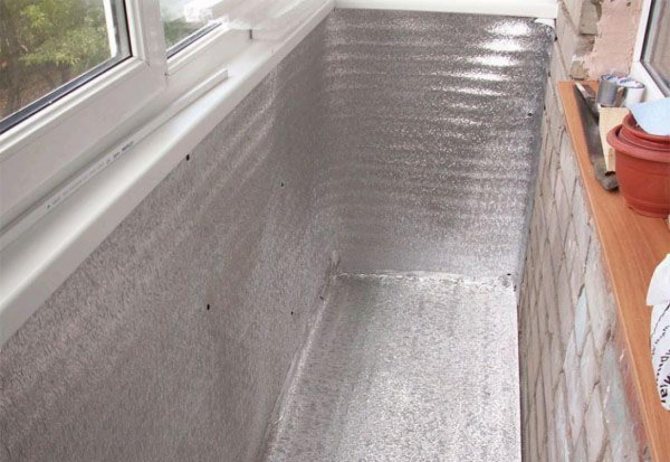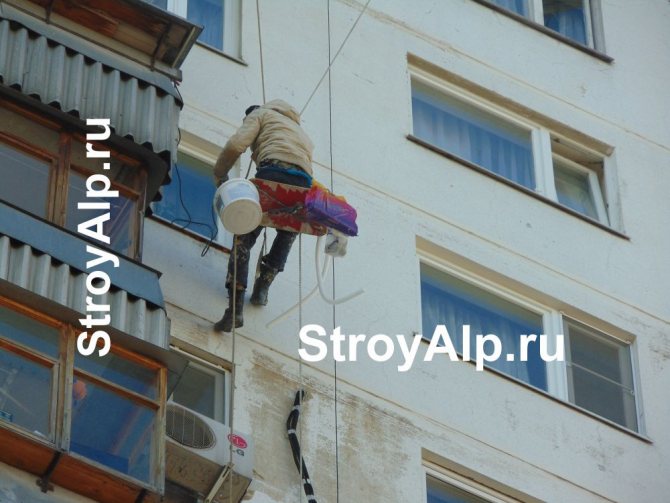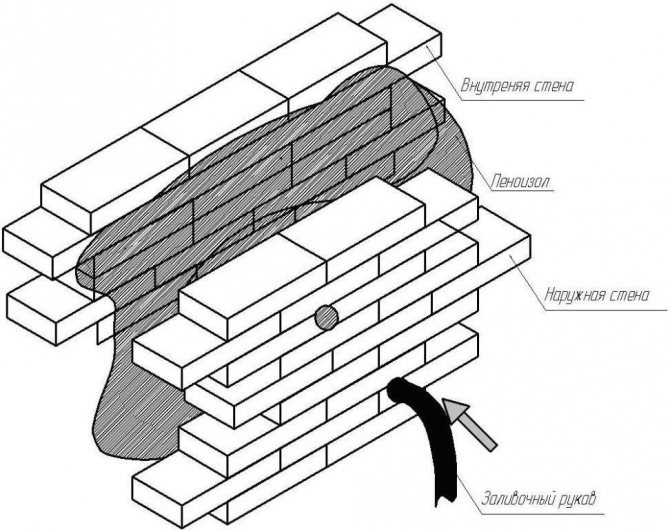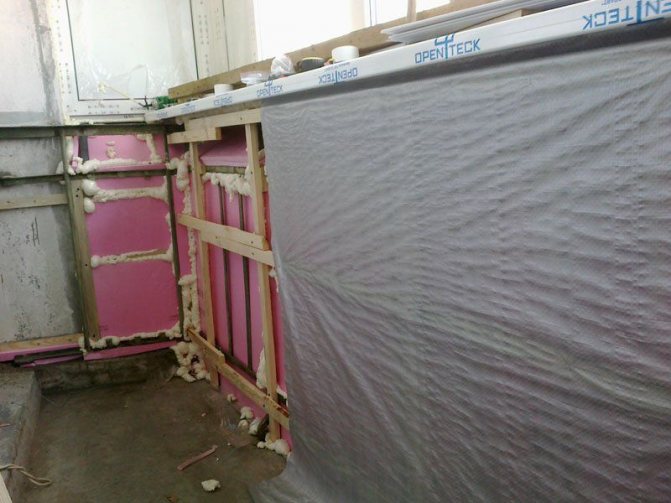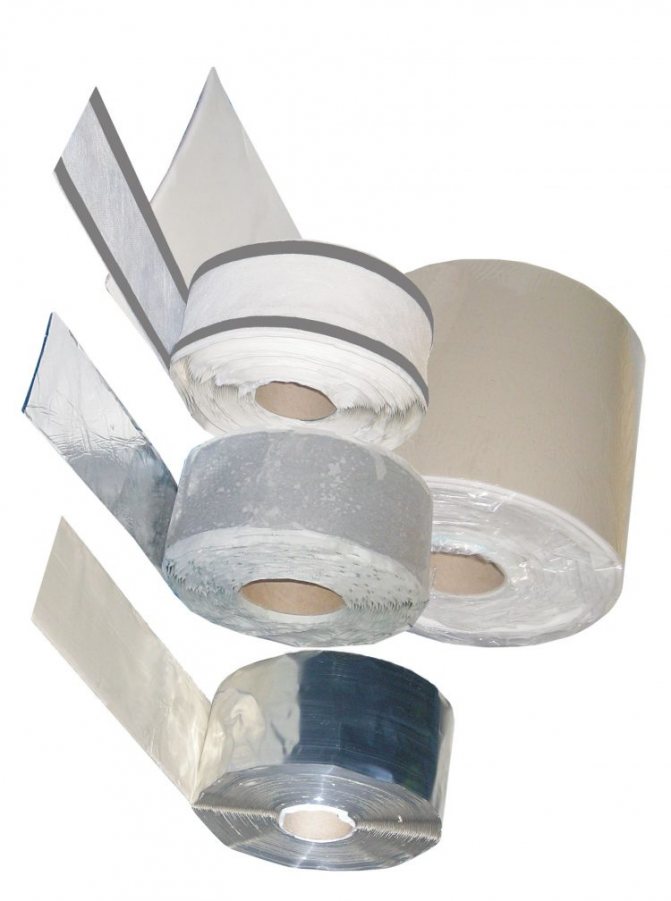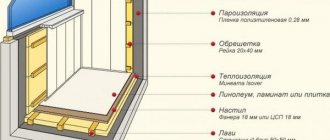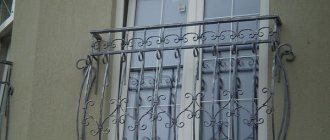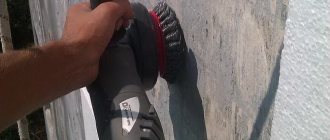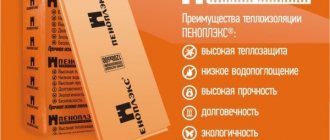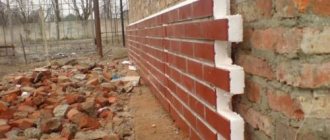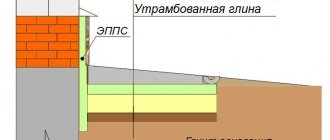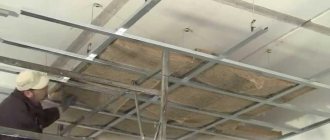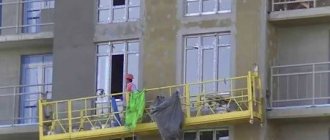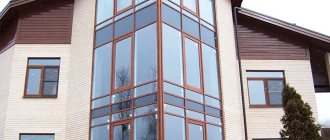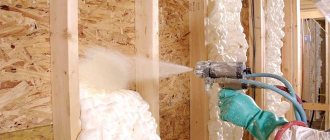What is a vapor barrier for when insulating a balcony
Vapor barrier plays an important role in the well-being of the interior decoration of the balcony, as it prevents the ingress of steam and the formation of condensation. When the level of humidity in the room is high, then the end result is fungal organisms, growths and mold on the ceiling, walls and floor. Mostly problematic apartments are those in which the temperature regime is constantly jumping. As a rule, the balcony begins to overheat when exposed to sunlight, and cool down sharply in the evening. This leads to the appearance of a large amount of moisture.
When repair work begins, vapor barrier must be resorted to first. Only after proper installation can you begin to insulate the floor, walls and ceiling. Otherwise, unplanned costs will appear in the near future.
To prevent the formation of fungi, it is better to use a double layer film
It is worth considering that with the appearance of mold, condensate and steam mass will begin to increase even more due to regular exposure to sunlight and temperature changes. Long-term neglect of harmful formations can significantly complicate their destruction.
The vapor barrier of the balcony rapidly restrains the moisture that forms in the room during exposure to sunlight. If the obstacle is removed, then the following problems will arise:
- Penetration of steam into the insulating material, after which the gaseous mass becomes water.
- Fluid will start to build up on steel structures, which will rust.
- Steam settling on wooden and metal elements of the balcony.
- The formation of a fungus, which will gradually destroy the finishing material, the wooden bases of windows and doors.
- Ultimately, the microclimate of the balcony will be disturbed.
Attention! The vapor barrier can interact with any modern building materials.
The main characteristics of vapor barrier materials
First of all, it should be borne in mind that vapor barrier is mandatory for those rooms that are exposed to temperature extremes and changeable humidity. Balconies and loggias just fall into this category. The vapor barrier layer helps to protect building materials from moisture penetrating from the street. And, in addition, it also improves the thermal insulation qualities of the products used.
Only a properly selected vapor barrier is able to most effectively perform its important functions, in particular:
- maintain the basic qualities of building materials, as well as heat-insulating and sound-absorbing layers;
- reliably waterproof the space of the balcony or loggia;
- to reduce the occurrence of condensation, which has a detrimental effect on the used building materials;
- create a reliable barrier preventing the penetration of moisture vapors.
That is, we can conclude that the vapor barrier of the balcony is a very important stage that should not be skipped.
In this case, the question remains unresolved, what materials are best used for this purpose? To understand this, you should familiarize yourself with the main characteristics of the products:
- vapor permeability coefficient - the value can be from 0 to 3 thousand mg / m², that is, the figure means that the material can pass a certain amount of steam per day through each square meter of the film, the lower the indicator, the more vapor-tight the product;
- strength indicator - the higher the characteristic, the more reliable the material;
- water pressure - a high indicator ensures that moisture from heavy rains does not get inside the film;
- installation options are also an important characteristic; it is better to purchase products that do not require complex fastening.
How to choose a vapor barrier for insulating a loggia
The main thing in laying a balcony vapor barrier is care and selection of appropriate materials. Correctly selected vapor control elements guarantee:
- perfect noise reduction;
- protection against heat loss and penetration of moisture and gaseous masses;
- reduction of condensation in the room.
Balcony vapor barrier can be divided into two types: deterrent and neutralizing. The first option is designed to protect against moisture penetration. The second one destroys the steam mass and removes moisture. Of course, it is better to use the latter option, since neutralization will not only help get rid of the liquid, but also provide protection from wind and moisture. In addition, the material has an elastic and durable structure.
As for the choice, the following products can be purchased on the domestic market, which have different properties, prices and methods of installation:
- Tyvek. It is a non-woven material with a membrane structure. Due to its properties, it perfectly copes with the elimination of moisture. The product has the same structure on both sides
- Yutafol. High-strength film that holds back gaseous and liquid masses.

The material has high moisture protection due to its dense structure - Penoizol. An excellent liquid-form foam that is designed to fill the space between walls. Used as a vapor barrier on the balcony, however, the installation is too complicated. It is better to use a product for wall and ceiling decoration
- Penofol. Thin insulation element designed to contain steam and condensation. The material is widely used for covering wooden walls.
- Izospan Delta. A tough film used to contain condensation. Izospan differs in low cost
- Foam polyethylene, provides protection from wind, moisture and heat. The material is one of the most common vapor barrier types.
- Liquid rubber. They are widely used for the treatment of complex surfaces. The plasticity of the structure allows you to penetrate the most difficult places
In order to choose the right material, it is necessary to assess the complexity of the work and the condition of the balcony walls. For the treatment of rooms with strong thermal changes, you will need a two-layer film.
Vapor barrier materials
Correctly selected vapor barrier materials are designed for the following:
- provide heat and sound insulation of the room;
- prevent the penetration of water vapor;
- provide reliable waterproofing and ventilation of the balcony or loggia;
- the level of evaporation of heat-insulating layers decreases.
Features of polyurethane foam
It is the most popular material used in the construction and repair of various elements, as well as insulation. To use it, no special skills are required, so all the work can be done independently. The foam is sold in the form of a cylindrical balloon at any hardware store.
The main advantages of polyurethane foam:
- high-quality thermal insulation;
- prevents the penetration of moisture into the building structure;
- tightness;
- low cost.
However, there is also a significant drawback: the polyurethane foam is destroyed when exposed to direct sunlight. To avoid this, it is necessary to cover the areas with foam with a sand mortar.


There are several types of polyurethane foam, which differ in their component composition. They are performed both from one substance and several. The first type is made from a special polymer. When it interacts with humid air, it increases in volume.The result is a rigid connection.
It should be borne in mind that during the drying process, the polyurethane foam increases several times.
All these advantages of foam do not guarantee reliable and high-quality vapor barrier, as it absorbs moisture. Therefore, waterproofing of this building material is necessary.
Using penoizol
It might be interesting
Vapor barrier
Technologies and materials for effective floor insulation in ...
Vapor barrier
Vapor barrier and waterproofing, is there a difference?
Vapor barrier
Features of the vapor barrier of a wooden building
Vapor barrier
Vapor barrier in the bath, how to make it right?


Penoizol is used for vapor barrier of a balcony or loggia
The most popular building material for the vapor barrier of a balcony or loggia is penoizol, which fills the voids between the inner and outer walls. This process takes place in the presence of special equipment and highly qualified personnel.
The foam fills only the inner part of the wall and provides reliable moisture protection. Penoizol may lose its insulating properties in the winter period of the year, since the moisture accumulated in the pores expands when freezing and forms pores.
Penofol for vapor barrier
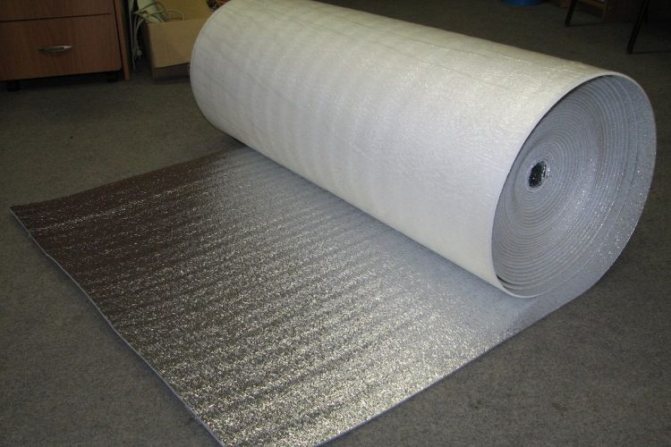

What does penofol material look like?
As a rule, a balcony or loggia is small in size, so the arrangement process takes a lot of time and effort. Penofol, which has a special structure, will speed up this process. The middle layer consists of expanded polyethylene, the edges of which are covered with high-quality aluminum.
With its low thickness, penofol has unique technical characteristics that prevent the penetration of moisture, sound, steam and wind... All these properties play an important role in the thermal insulation of a room.
Penofol gained popularity not only due to its technical characteristics, but also due to its flexibility and environmental friendliness. He is the leader in vapor barrier materials among domestic manufacturers.
Liquid rubber in vapor barrier
In addition to the above vapor barrier materials, which are foam, liquid rubber is a new solution for vapor barrier. It provides a reliable and high-quality connection of cracks in the structure. Its cost is quite high compared to other building materials. Anyone can cover the surface.
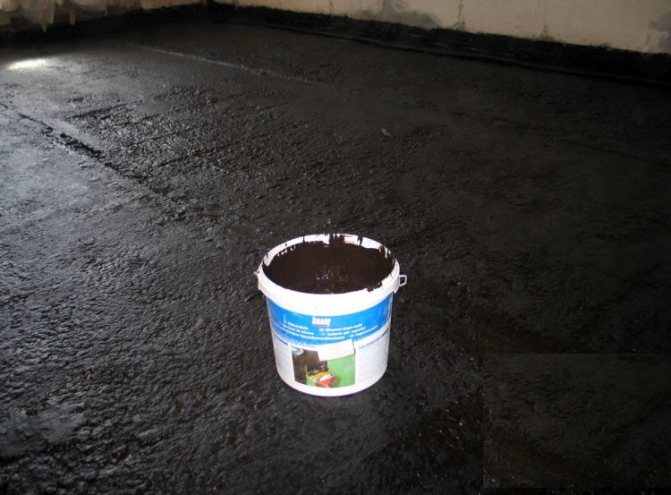

Liquid rubber for vapor barrier
Materials of foreign manufacturers
There are several types of vapor barrier materials that:
- or prevent complete penetration of moisture;
- or evaporate moisture through an engineered ventilation system.
The latter type includes vapor barrier materials with high strength and elasticity. They prevent the effect of evaporation on the balcony or loggia. This material can be used in any climate.
Another manufacturer of vapor barrier materials is. The materials of this company prevent the penetration of condensate, and also ensure its evaporation, they are also used in the construction of a sloped roof. Thanks to the development of modern technologies, vapor barrier is used not only for the roof, but also for the walls.
Vapor barrier materials are particularly strong and durable. Their cost is much higher than that of domestic manufacturers, however, the quality is quite high.
Materials of domestic manufacturers
High-quality insulation and vapor barrier of the room, loggia or balcony is provided by isospan. This material is produced in the Russian Federation, it provides moisture evaporation from any structure. Another positive quality is the low price compared to foreign manufacturers.
How to prepare a balcony for the installation of a vapor barrier
Before installing the vapor barrier, it is necessary to prepare the surface of the treated elements. First of all, you should dismantle the door and window frames, then carry out a general cleaning on the balcony and clean the ceiling, walls and floor of debris.
During repairs, unnecessary items should not be present on the balcony
The next step is to clean up cracks and boulders on surfaces. To do this, it is worth applying cement, after which the walls and ceiling must dry. Next, you can start sealing with a protective film. The procedure must be performed in accordance with the following instructions:
- Install on the outside of the balcony.
- In the internal vapor barrier of the balcony, it is carried out under the mineral wool, after which the film must be fastened.
- On the ceiling, it can be mounted directly on the insulating layer.
If there is a fabric part on the vapor barrier material, then it should be on the outside of the finish. Foil should always be placed inside.
Preparatory work
As already noted, insulation from steam should be dealt with before insulating the balcony. Prepare the room, remove all unnecessary things, including garbage. Remove the door frame, balcony sill. Seal cracks, gaps with polyurethane foam. Eliminate unevenness.
When the surface is ready, you can start installing the vapor barrier layer. But before that, it is worthwhile to deal with the question that worries builders (especially beginners): which side should the vapor barrier material be laid on? Vapor barrier materials are produced double-sided. Which side to lay to the insulation is really important, and it also matters which side the vapor barrier is made on - from the outside or from the inside:
Balcony vapor barrier scheme
- if external insulation of the facade is carried out, insulation from steam is laid on the outside of the insulation;
- if the insulation is internal, the insulation should be laid as an inner layer over mineral wool or foam;
- when insulating the ceiling, the film holding the steam is glued to the insulation.
If the material of the vapor barrier of balconies has a fabric side, it should "look" outward, foil - inside the balcony (with internal insulation).
How to install a vapor barrier on a balcony
During the bonding of the film, the layers must be stacked on top of each other, this ensures that there is no empty space. At the edges, the vapor barrier material has a special mesh that will help you navigate during the creation of overlaps. For gluing the joints, use an adhesive tape with a metallized coating.
Balcony ceiling vapor barrier
The very first surface on the balcony, which must pass the vapor barrier, is the ceiling. The gaseous mass primarily tends upward, which means that it will be the central place for the accumulation of mold. In this case, the vapor barrier with penoplex will not help to insulate the loggia, since small cracks will remain.
Don't leave empty space in the ceiling
First you need to lay a vapor barrier layer of film, and then install a sealing element. Next, install polystyrene foam plates, and then lay a waterproofing coating.
Attention! The voids between the vapor barrier and the top layer of the ceiling will always collect a large amount of steam.
Balcony floor vapor barrier
It is most difficult to mount a vapor barrier on the floor of the loggia during insulation, since in this case the surrounding conditions play an important role. The only plus is the uselessness of installing floors on the floor from the side of the floors. First of all, you will need to lay the foam on the floor. It must be installed tightly to the end surfaces, and then insulated. Further, lay the screed with a waterproofing layer, since liquid retention is required. Usually a small amount of steam accumulates on the floor, so cold air will be present in this environment.
One material can be used for vapor barrier walls and floors
Vapor barrier walls on the balcony
The vapor barrier of the balcony along the walls when insulated from the inside is calculated based on the material with which the surfaces are equipped. In any case, it is necessary to use penoplex as insulation, however, not every material can act as a vapor barrier. If the walls are made of bricks or concrete, then a double film with a foil surface can be used. According to the rules, the reverse side should be located in the inner part of the finish. When the wall is wooden, then such a film is absolutely not needed, since there is enough foam for vapor barrier.
You can strengthen the vapor barrier layer with glazing beads or metal profiles
When the vapor barrier of the balcony is carried out outside, then in most cases it is necessary to use penoplex. The main advantage is that liquid or vapor cannot form on the outside, and if moisture appears, it cannot seep into the wall.
Features of installation of a vapor barrier layer
With internal and external insulation
When insulating the balcony from the outside (in the case of the lower floor, the presence of scaffolding, if it is important to preserve the internal usable area of the balcony), the vapor barrier will cover the insulation from the outside. With internal insulation of walls, floor and ceiling, the vapor barrier of the balcony will be an internal layer laid on top of the insulation.
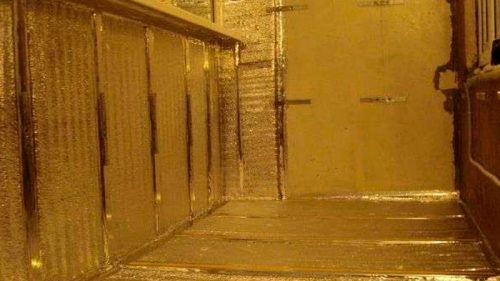

Orientation of the sides of the vapor barrier
With the budget option of a film vapor barrier, which is a deaf barrier to vapor, this issue is irrelevant. The film is laid with either side to the insulation.
If other types of vapor barrier are used, then before laying it is necessary to read the instructions that the manufacturer attaches to each of its rolls. The following recommendations will help you figure it out without instructions:
- with different colors of the sides, the paler side is laid to the insulation;
- if the vapor barrier has a reflective side with metallization, it is laid with this side inside the balcony;
- some vapor barriers (anti-condensation films) on one side have a fleecy fabric structure, with this side they are oriented outward;
- according to the observations of professional builders, when a roll with a vapor barrier material is rolled out on a flat surface, the side adjacent to the floor should also be adjacent to the insulation.
Professional advice
According to professionals, the balcony vapor barrier should be done after thorough preparation of all surfaces. Even a small crack on the wall can contribute to poor material placement, and hence the penetration of steam or liquid.
After general cleaning of the wall, the ceiling must be carefully treated with cement and the irregularities that have arisen must be removed. After the procedure, the balcony must dry, and only then can the vapor barrier be started. As for the floor, it does not need to be carefully leveled, because liquid collection in the lower part of the loggia is unlikely. For insurance, a thin film with aluminum interlayers can be laid under the foam, however, there is no special need for this.
The choice of material and floor construction
Do-it-yourself insulation of the loggia floor begins with the question: What kind of insulation to choose?
The most popular are the following thermal insulation materials:
- Styrofoam. The most popular material for thermal insulation, due to its low price and ease of use, they insulate 50% of all balconies and loggias in the country. Its advantages include low thermal conductivity, excellent moisture resistance and low weight, and the disadvantages are fragility.
- Penoplex. Extruded polystyrene foam, a "relative" of polystyrene, which differs from it in increased strength, durability, ease of installation and, as a result, higher cost, is presented in the next photo.
p, blockquote 9,0,0,0,0 ->
- Mineral wool. It is considered one of the best insulation materials in terms of technical and operational characteristics. It is durable, does not burn, is a vapor-permeable material. The main disadvantage is the fear of moisture, due to which the mineral wool loses its properties, therefore, when using it, high-quality steam and waterproofing is required.
- Expanded clay. Loose insulation with good thermal insulation properties and affordable cost. For high-quality insulation, a large layer is required - from 15 cm. The disadvantages include high hygroscopicity.
- Penofol (isolon). Foil-coated polyethylene foam (photo). To insulate a balcony, its thickness will not be enough, but it is successfully used as a heat reflector and vapor barrier in combination with another insulation, such as mineral wool, making the thermal insulation ideal.
Related article: Do-it-yourself insulation of a loggia with mineral wool
p, blockquote 10,0,0,0,0 ->
p, blockquote 11,0,0,0,0 ->
There are two ways to insulate the floor on the loggia with your own hands:
- Warming along the logs. A simple and quick method of installing a floor with insulation; any of the above insulation materials can be used for its implementation. The heat-insulating material is placed in the gaps between the logs, a flooring of boards or plywood sheets is placed on top, as in the next photo.
p, blockquote 12,0,0,0,0 ->
- Laying insulation under the screed. When choosing this method, you can insulate the floor on the loggia with expanded polystyrene (polystyrene, penoplex) or kermzite. The screed is the best choice when installing a "warm floor" on the loggia, but you need to take into account that you will have to wait a long time for it to dry.
p, blockquote 13,0,0,0,0 ->
p, blockquote 14,0,0,0,0 ->
Important! Laying the heat insulator under the screed is possible with the insulation of the loggia, which has a reliable overlap. In the case of a balcony, it is better to immediately choose a lagged floor structure, since the balcony slab may not withstand the weight of the screed.
